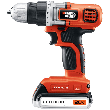Everyone has a leaking pipe or plumbing eventually, and one of the more interesting leaks to fix is a leaking toilet tank. Luckily, repairing a leaking tank is a really easy task to accomplish. All you need to do is gather together a few tools, materials, and have a couple of hours to do the work. As you are accomplishing this task, make sure that you do not get flustered, as you are more than likely going to get a little dirty and wet. In the end, the project will be worth it, since you will have saved some serious money by not having to deal with a plumber.
Materials:
- Two adjustable wrenches
- Screwdriver
- Small wire brush
- Spud wrench
- Flush valve gasket
- Fill valve
- Gaskets
- Spud washer
Procedure:
- Identify the leak. Typically a leaking tank will be due to one of three causes: the fill valve, the tank itself, and a problematic spud washer. As long as you don't have a cracked and leaking tank, then you can simply fix the other problems by following these steps. If the tank itself is cracked, then you will need to replace it.
- Turn off the water. Once you have identified where the leak is at, turn off the water supply to the tank. This will allow you to work without having any risk of a huge mess.
- Drain the tank. Drain your tank by flushing the toilet until no more water comes into the tank itself.
- Remove the tank. Remove the tank by using a screwdriver and an adjustable wrench to unlatch all of the bolts from the inside of the tank. Once you have removed the tank bolts, gaskets, and so on, remove the fill valve itself. Do this by simply unscrewing everything. Make sure that all the parts are clean, and scrub with white vinegar if necessary. After you have removed everything, remove the tank from the toilet stand.
- Replace the spud washer. Look where the toilet tank and the stand met. There should be a gasket that connects these two items. This is called the spud washer. Use your spud wrench to help remove this item, and take it to your local home improvement store to ensure that you get the correct replacement. Place the new spud washer where the old one was located.
- Restore everything. Put everything back together. Once you have replaced all of the bolts, nuts, and the fill valve, turn the water supply back on. Take this opportunity to ensure that your work is complete, and there are no more leaks. If you still find yourself with a leak, then you have not tightened everything like it should be. Double check to ensure that all gaskets, bolts, and so on have been replaced, and then test again.
Author Bio
Lee Wyatt
Contributor of numerous Tips.Net articles, Lee Wyatt is quickly becoming a regular "Jack of all trades." He is currently an independent contractor specializing in writing and editing. Contact him today for all of your writing and editing needs! Click here to contact. Learn more about Lee...
Cutting through the Dealer Hype
Dealing with dealer hype can be an extremely frustrating experience for anyone buying a car. Here are some tools for you ...
Discover More
Installing Exterior Christmas Lights
You can never really say that you are ready for the Christmas holiday until you have decorated your house, and is there ...
Discover More
Organizing a Girl Scout Troop
The Girl Scouts have long had a wonderful tradition in preparing girls and young women gain confidence in themselves, ...
Discover More
More Home Improvement Tips
Replacing a Toilet Fill Valve
Everyone has a problem with their toilet once in a while. Instead of calling an expensive plumber or repair man to come ...
Discover More
Insulating Your Plumbing
Even if you live in a mild climate and don't experience cold winters, you can insulate your plumbing and save energy and ...
Discover More
How Do You Stop Water Hammering?
Water hammering is an incredibly common problem that many, if not most, homeowners will face at least once in their ...
Discover More

Comments